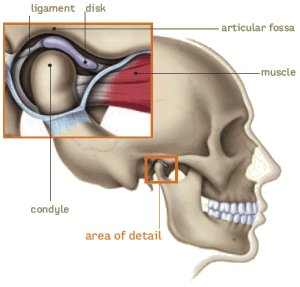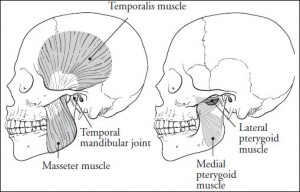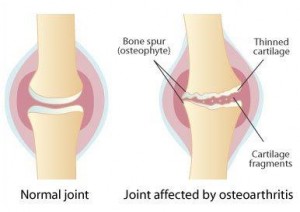Suffering from painful and limited opening of the mouth? Having difficulty moving your mouth as you please? You could be experiencing a condition called trismus.
What is trismus?
The definition of trismus is the reduced opening caused by spasm of the muscles of mastication (the muscles used to chew food) but the term is used loosely for all causes of limited opening. Limitation of movement of the temporomandibular joint or TMJ may be due to factors within the joint (intra-articular) or outside the joint (extra-articular). Temporary muscle trismus is much more common than permanent trismus. True trismus is usually temporary.
What is TMJ?
Temporomandibular joint is the joint of the jaw and there are two TMJs, one on each side of the face. The name is derived from the two bones which form the joint: the upper temporal bone which is part of the cranium (skull), and the lower jaw bone called the mandible.
What are the causes of trismus?
Causes of limitation of mouth opening include:
Intra-articular causes
- Internal derangement of the joint
- Fractured condyle (the round bump on the lower jaw where it forms a joint with the upper jaw)
- Traumatic synovitis (inflammation of the synovial membrane that lines the temporomandibular joint)
- Septic arthritis (inflammation of a joint or joints)
- Osteoarthrosis
- Inflammatory arthritis (for example rheumatic arthritis)
- Ankylosis (secondary to trauma or infection)
- Lesions of the condylar head (for example osteochondroma)
- Dislocation of the joint
- Intracapsular fracture
Extra-articular causes
- Trauma (for example fractured mandible not involving the condyle)
- Postsurgical removal of impacted lower third molar (wisdom tooth) or recent prolonged dental treatment
- Acute infections, inflammation and abscesses of the oral tissues especially involving the cheeks of the muscles of mastication, usually dental in origin (for example pericoronitis, mumps)
- Muscle spasm of masticatory muscles (for example myofascial pain)
- Disease of masticatory muscles (for example myositis ossificans)
- Scarring of muscles, skin or mucosa (for example submucous fibrosis or after radiotherapy)
- Inflammatory conditions of the oral mucosa (for example painful ulcerative conditions or other forms of stomatitis)
- Tetanus
- Overgrowth of the coronoid process (the sharp triangular process projecting from the lower jaw)
- Hematoma or fibrosis of medial pterygoid masticatory muscle (for example following inferior dental nerve block for extraction of teeth on the lower jaw)
- Drug-associated dyskinesia (abnormality in performing voluntary muscle movements) and psychotic disturbances
What are the common causes of pain in the temporomandibular joint?
There are three conditions that are common and they are usually classified according to the ‘Research Diagnostic Criteria’ or RDC system.
Myofascial pain
Myofascial pain, also known as arthromyalgia, a chronic pain disorder due to central nervous system-induced involuntary contraction of masticatory muscles, is categorized under masticatory muscle disorders. This condition was previously named temporomandibular pain dysfunction syndrome, myofascial pain dysfunction syndrome and masticatory myospasm.
In this condition the masticatory muscles, which move the joint, are the source of pain and the condition has little or nothing to do with the joint itself. It has three cardinal symptoms: pain associated with the joint or its musculature, clicking of the joint and limitation of jaw movement.
The pain is described as a diffuse ache over the side of the face and has a tight, heavy or dragging quality. The pain can be mild or severe and usually fluctuates in intensity, with bouts of exacerbation lasting hours or sometimes days. Two presentation are seen, one with pain that is worst in the early morning and one in which it builds up through the day and is worst in the early evening.
Movements of the jaw are sometimes painful, but not always, and mouth opening is sometimes restricted. Tight bands within tense muscles are thought to be the cause. The condition also affects other parts of the musculoskeletal system, where it may be termed fibromyalgia.
Internal derangement of the temporomandibular joint
Internal derangement of the temporomandibular joint is the term used to describe instability or abnormal position of the articular disc (a flat circular collagenous tissue located at the joint that aids in movement of the lower jaw), usually anterior displacement. There are three types of internal derangement – disc displacement with reduction, without reduction and with perforation. This condition gives rise to clicking and locking of the TMJ.
Osteoarthrosis
Osteoarthrosis or degenerative joint disease is also commonly seen in the TMJ and the condyle in particular. Although commonly ascribed to wear and tear, the cause is probably failure of cartilage repair with a genetic predisposition. Fibrillation (cracking and fraying) of the articular cartilage and loss of proteoglycans lead to break up of the articular surface. This causes pain on movement, especially when the joint is loaded, for instance during chewing, there is restriction of movement in all directions. Crepitus (a grating or crunching noise and sensation) is also evident.
To be continued in Part 2



